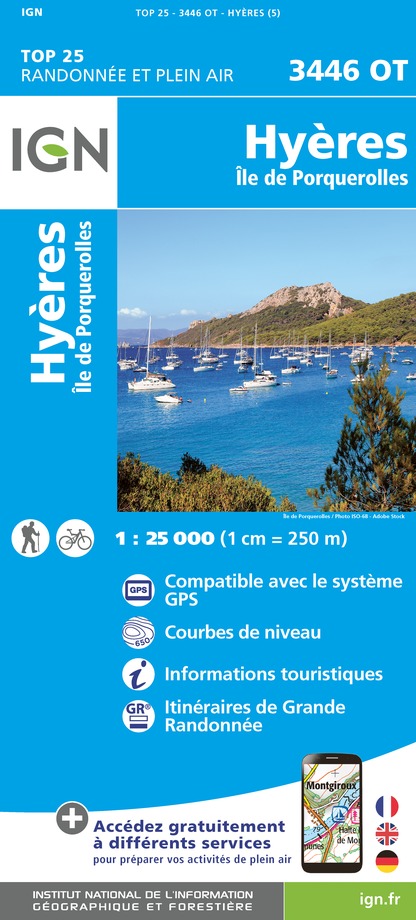Alert
Alerts
The Memory Road of La Londe les Maures 1942-1944




IGN cards







Description
The Committee of the French Remembrance of La Londe les Maures, with the support of the municipality, proposes a free path that recalls the occupation of the village from 1942 to 1944, the commitment and the sacrifice of its inhabitants and its liberation on August 17, 1944.
Two panels at the East and West entrances of the city, 5 lecterns and 2 wall plaques located in different places of the town, constitute a memory trail in tribute to the French and American soldiers and the twenty-two Londais "Dead for France" during the Second World War.
The project that was inaugurated on August 17, 2019, obtained the label of "75th anniversary of the landing and the Liberation" created for the occasion by the Ministry of the Army.
Technical Information
Altimetric profile
Starting point
Points of interest
Additional information
Towards the Liberation of La Londe Les Maures
After the military collapse of spring 1940 and the armistice of the 22nd June, France was divided into two zones: the northern half occupied by the Germans and the southern half administered by the regime of Marshal PETAIN.
In November 1942, after the Allied’s landing in North Africa, the whole country was invaded. La Londe les Maures experienced the occupation by the Italian (November 1942 - September 1943) and German (September 1943 - August 1944).
While the Battle of Normandy is raging since June 6th, 1944, the Provence landing – also called "Operation Anvil - Dragoon" - took place between Rayol Canadel and Saint Raphaël.
The Allies entrusted the mission of landing on the beaches of Provence to the Army B (which then became the 1st French Army Rhine and Danube) commanded by General Jean de LATTRE de TASSIGNY.
On the night of August 14th-15th, 1944, the African commando group and the naval assault group landed on the beaches while the American Canadian rangers landed on the islands of Levant and Port Cros. American troops landed on the morning of August 15th in Cavalaire Bay, Pampelonne, Nartelle and Dramont and the whole 1st Army followed from August 16th to 21st along the entire Var coast.
The African commandos
Originally from mainland France, Algeria, Tunisia, Morocco and Africa, the commandos had to undergo intensive training. The risky missions required extreme physical endurance and perfect organization.
Since their creation in 1943, they have fought hard and on various fronts: Tunisia, Pianosa Island, Elba Island and now on metropolitan territory.
After landing front guard at Cap Nègre and on the beach of Canadel, on the night of August 14th to 15th, 1944 and establishing a bridgehead at La Môle, Colonel BOUVET's group of 800 African commandos liberated Le Lavandou on the 16th and Bormes les Mimosas on the 17th. They released 300 hostages. On the evening of the 17th, having joined the elements of the 3rd US Division, they arrived at the entrance of La Londe les Maures. They waited with the Americans until the early morning of August 18th to enter the village that the German troops had left during the night.
The 3rd American Infantry Division (3° DI.US)
Commanded by General O'DANIEL, it disembarked at Cavalaire and Pampelonne in the morning of August 15th and joined the commandos at Cap Nègre around 6 p. m. On the 17th, in the middle of the afternoon, Company "E" arrived in the Saint Honoré district by this road. The first clashes with German troops began right here. A US destroyer tank is put out of action by the occupant's fire. Sergeant Stanley BENDER disables several defensive positions at the head of his company, at the cost of an extraordinary feat. He pushed his way to the Pont du Maravenne which now has his name.









